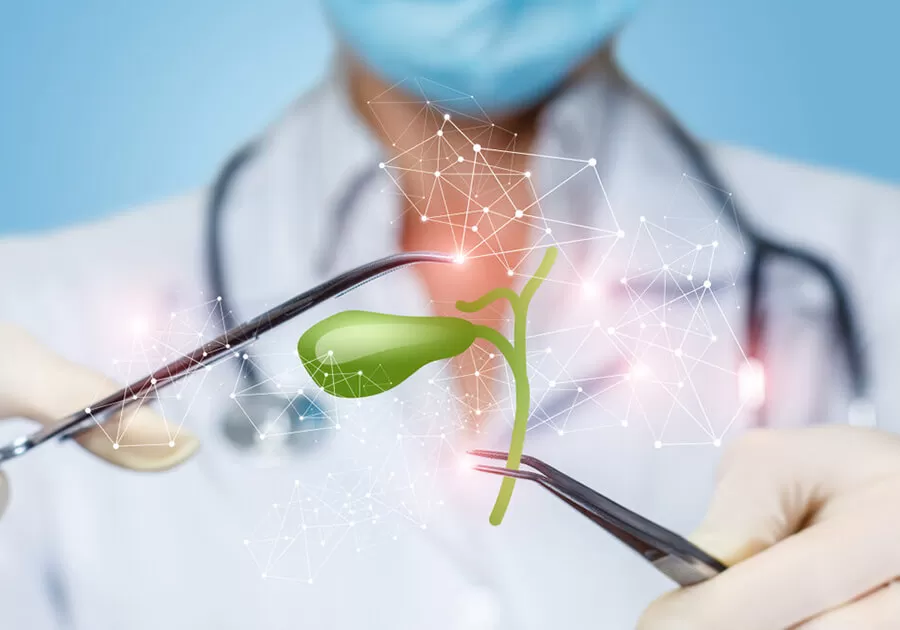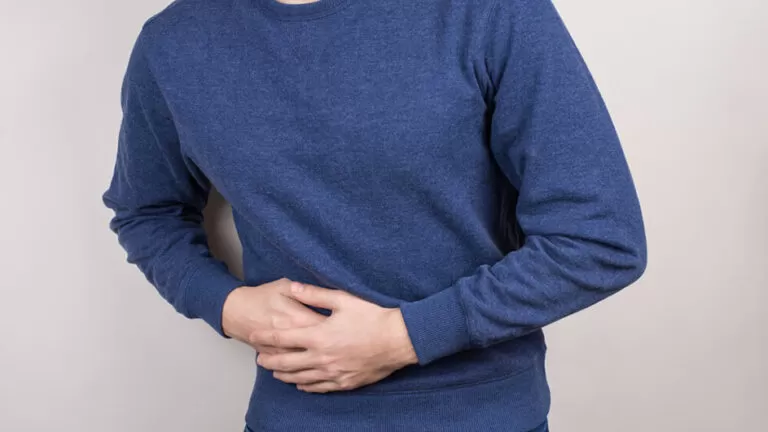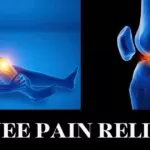The gallbladder is a pear-shaped, hollow organ. It is located under the liver. The gall bladder is connected to the liver by a thin cystic duct. This narrow tube connects your gall bladder with the common bile duct. The bile produced by the liver travels through the common duct and empties into the small intestine. Gallstones are abnormal deposits of solid material that may form in the gallbladder and move out of it. A person is said to have gallbladder stone disease if he/she has several symptoms associated with these abnormal deposits in his/her body. Gallbladder stones are also called cholelithiasis or cholecystolithiasis.
There are two types of gallstones:
Cholesterol stones: They’re made mostly of hardened cholesterol (90 percent). They’re yellow-green in color. Most gallstones fall into this category.
Pigment stones: They’re made up of bilirubin (a yellow-brown substance) and other waste products that form in your bile. Pigment stones tend to be smaller and darker than cholesterol stones.
Symptoms of Gallbladder Stones
Gallstones are typically made up of cholesterol and bilirubin, which is a breakdown product of old red blood cells. They form in the gallbladder, which is a small organ located on the right side of your abdomen, below your liver. Gallstones can be small or large about 5 to 10 mm in diameter.
Mainly, Gallstones that remain in the gallbladder usually cause no symptoms. However, a stone that blocks the bile duct can cause severe pain in the right upper part of your abdomen.
Other symptoms include nausea, vomiting, and fever.
- Severe pain in the upper-right part of your abdomen
- Pain that spreads to your back to right shoulder
- Abdominal bloating
- Nausea and vomiting
- Fever
- Yellowing of your skin or eyes (jaundice)
Causes of Gallbladder Stones
Gallstones are formed from bile. The components that makeup bile are:
- Cholesterol
- Bile salts
- Bilirubin
The liver produces bile and sends it to the gallbladder through small tubes called bile ducts. The gallbladder then stores the bile until food has been eaten, at which point it is squeezed and sends the bile into the intestines. The bile then helps to break down fats in the intestine.
In some people, cholesterol is not broken down correctly in the gallbladder. This can cause cholesterol to build up and harden, forming stones in the gallbladder.
Treatments for Gallbladder Stone

Treatment of gallbladder stones depends on the size of the stones, the patients can be observed if they have small stones or have no symptoms or complications.
If a patient has no symptoms, usually no treatment is necessary. The goal is to avoid future complications. Patients with asymptomatic gallstones should have their gallbladder examined by ultrasound every 6 months to 1 year. Moreover, If the gallbladder becomes inflamed, the patient may need antibiotics or surgery to remove the gallbladder.
The treatment options include:
1) Observation – In this case, the patient is monitored for several months to ensure that there are no changes in stone size. No medications or therapies are required during this time.
2)Medications – With some types of gallstones, medications can dissolve them. However, this method takes several months and is not guaranteed to work. Also, once the medication is stopped, the stones tend to reappear.
3)Bile salt supplements – Bile salts may help dissolve small gallstones (less than 1 cm). The bile salts are taken orally and then enter the digestive tract with food, where they are absorbed into the bloodstream and carried to the liver. They then stimulate the liver to produce more bile acids which dissolve cholesterol stones. This type of therapy often requires several months before it can be evaluated for effectiveness.
4)Shock wave lithotripsy – In this procedure, an instrument called a lithotripter is used to crush gallstones into sand-like particles so they can pass from the body in stools.
Nowadays, people are living more and more extended life spans, thanks to a number of developments in the area of public health. However, this trend has come at the cost of some individuals developing gallbladder stones at a much earlier age than in the past. If you’re suffering from abdominal pain, it might be a gallbladder stone better visit your doctor and get yourself tested.




